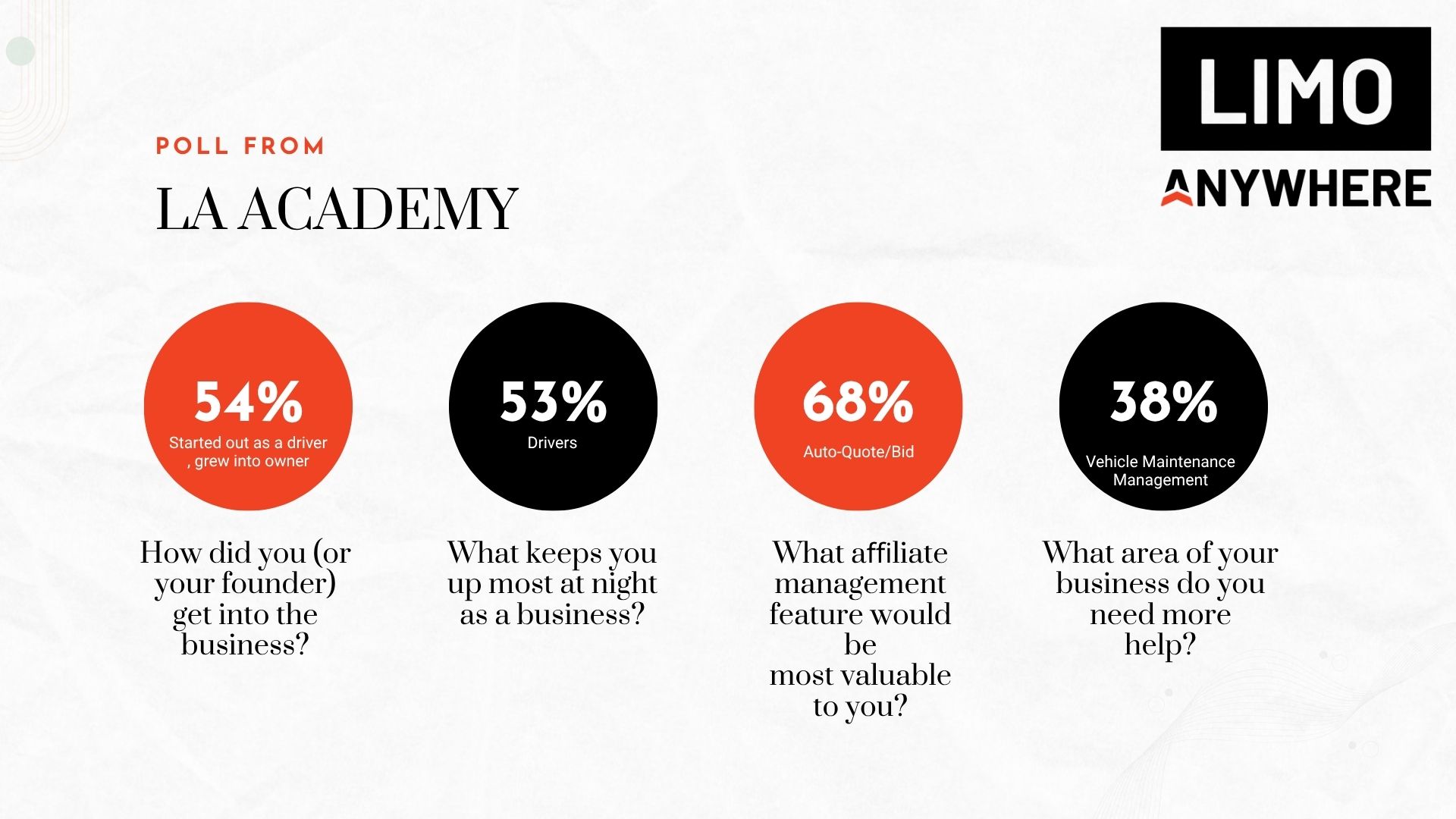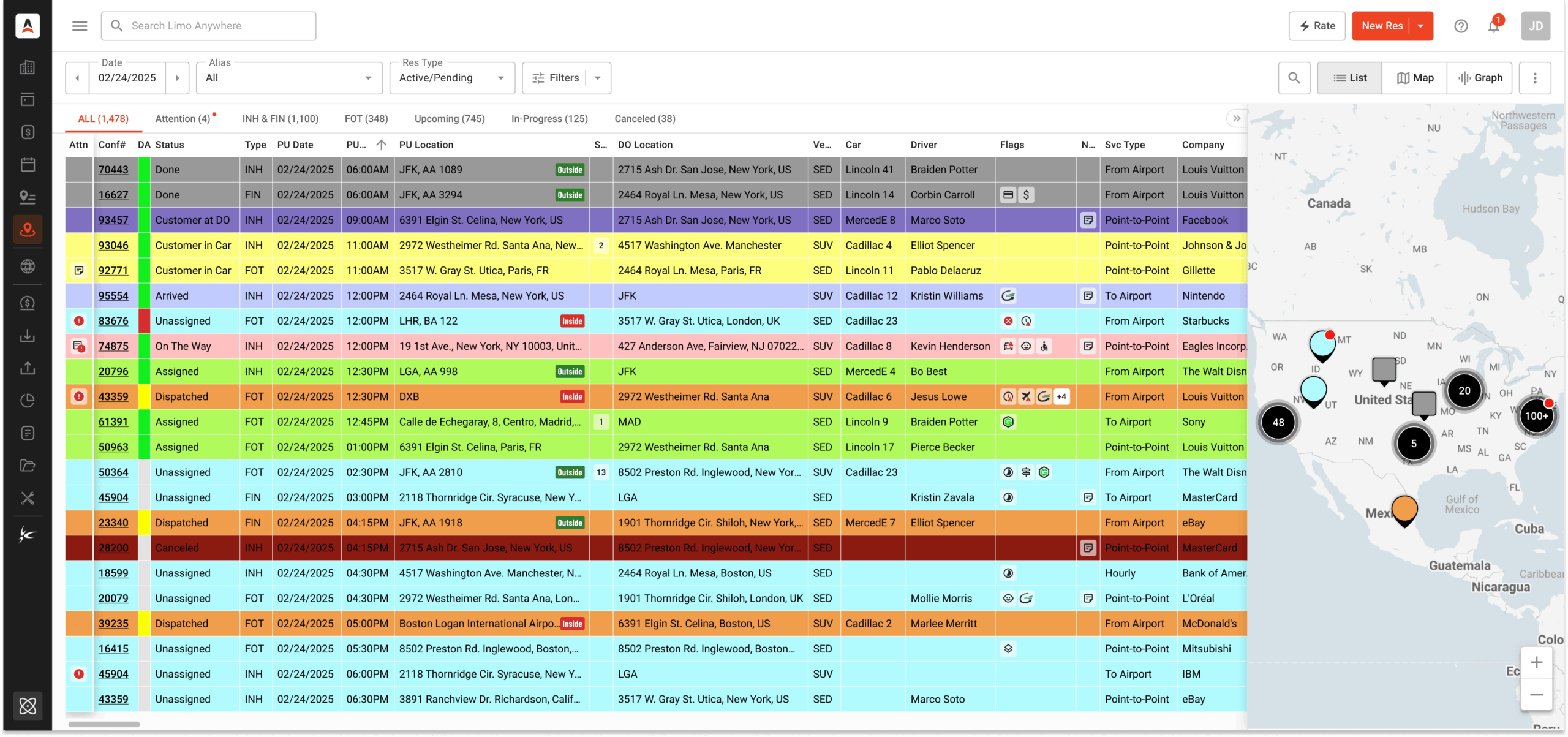Best Practices Series: Maintaining Data Hygiene in Limo Anywhere
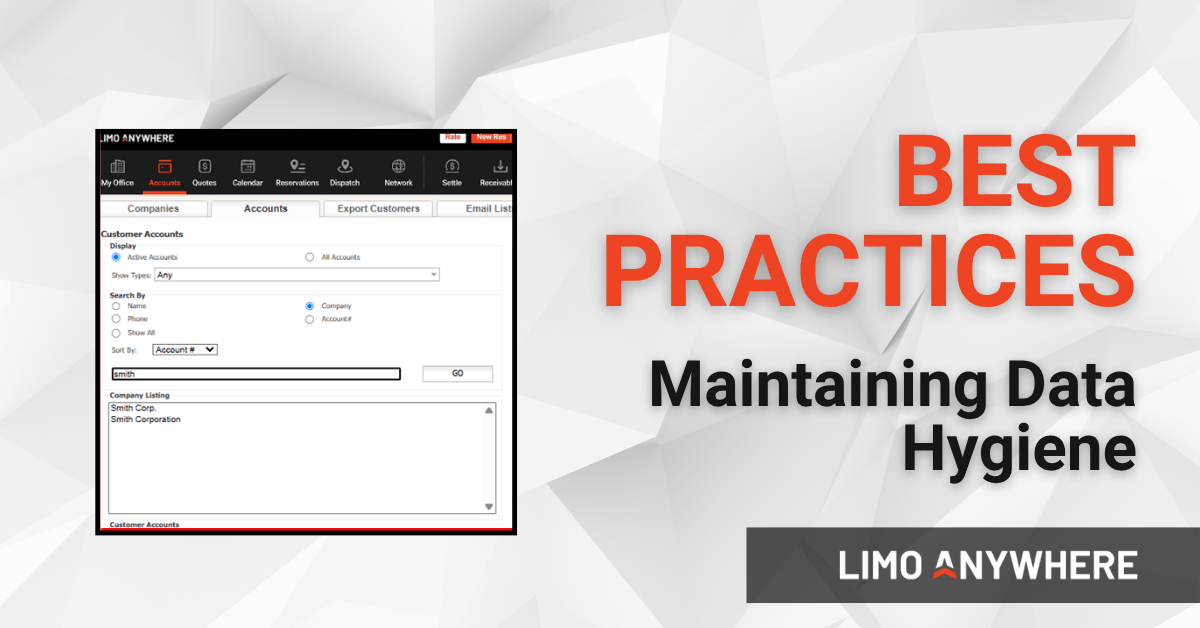
Your dispatch system is only as strong as the quality of your data. In fact, two insightful posts by Limo Anywhere — “System Clean‑Up, Part 1” and “System Clean‑Up, Part 2” — remind operators that periodic audits, clean‑ups, and disciplined data routines are what keep a system lean, accurate, and efficient.
Here is a quick round up of best practices rooted in those foundational ideas — helping you keep your system healthy, your team efficient, and your reports reliable.
1. Clean Up Duplicate Accounts
(Start with your client lists)
One of the most common sources of data bloat is duplicate or near‑duplicate client accounts. As noted in the clean‑up articles:
- Run a search for similar account names (for example: “Smith Corp.” vs. “Smith Corporation”)
- Merge or deactivate duplicates so that each client has one clear profile
- Archive contacts no longer active (e.g., old employees, closed departments)
A clean client list reduces confusion, prevents billing errors, and improves the accuracy of your reports.

2. Archive or Deactivate Inactive Vehicles and Chauffeurs
(Clean your dropdowns, reduce clutter)
Limo Anywhere points out that inactive fleet items and staff can populate dropdowns, slow down workflows, and create opportunities for mis‑assignment. Best practice:
- In the Vehicles module, mark vehicles that have left the fleet as “Inactive” or archive them
- In the Drivers/Chauffeurs module, do the same for former staff
- Keep historical data (so past trip records remain intact) but prune active lists
This keeps operational screens tidy and prevents unintended usage of retired assets.
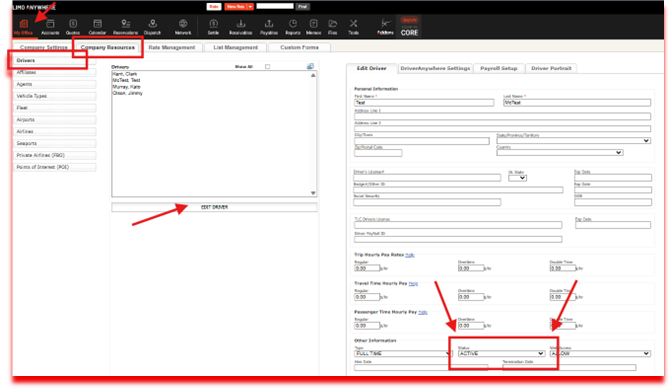
3. Review and Revise Rate Tables Regularly
(Ensure your pricing reflects today’s reality)
The “Clean‑Up” series emphasizes that rate tables — like zones, wait‑time fees, surcharges — can become outdated quickly. To stay sharp:
- Go through your Rate Management section quarterly
- Remove or deactivate rate combinations you no longer use
- Update any fees (fuel surcharges, tolls, waiting charges) to reflect current costs
- Ensure client‑specific rates still apply correctly
Correct pricing avoids undercharging, guest confusion, and increases transparency in invoicing.
4. Audit Service Types and Their Required Fields
(Eliminate confusion, improve booking accuracy)
Service‑type sprawl is another common issue: many minor variations accumulate over time, creating redundant or ambiguous options. Best practice:
- Review your Service Types list and retire unused ones
- Rename types that are unclear (for example, change “Type A” to “Airport Transfer – JFK”)
- Confirm each service type has the right required fields, default vehicle classes, and pricing rules
A streamlined set of service types helps your booking team move faster and improves downstream reporting.
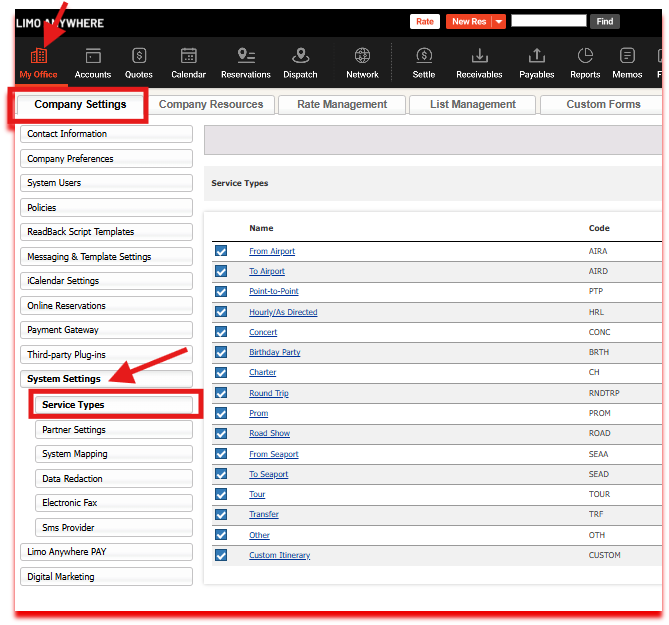
5. Standardize Data Entry Practices
(Consistency makes reporting work and operations smoother)
Data hygiene isn’t just about deleting old entries — it’s also about how new entries are created and entered. Pulling from the clean‑up articles:
- Develop internal standards for fields like account names, vehicle names, and client titles
- For example: always use “Corp.” instead of both “Corporation” and “Corp.”
- Make sure team members know how to use dropdowns instead of free‑typing (where available)
- Use consistent language and formatting for Trip Notes (e.g., “Late Arrival – Driver” as a pre‑set header)
This consistency improves reporting accuracy and helps anyone browsing records avoid confusion.
6. Draft Major Updates Outside the System
(Work it out before you enter it in)
When making significant updates to complex items—such as rate tables, zone setups, or client-specific pricing—it’s a good idea to map them out in a spreadsheet or document first. Working outside the system allows you to:
- Think through all your scenarios and exceptions
- Review calculations or logic with your team
- Ensure internal consistency before inputting live data
Once finalized, you can confidently send your Rates and Zones sheets to Support@LimoAnywhere.com for upload to your system. Or you can manually enter smaller changes into Limo Anywhere yourself, knowing they’ve been tested and approved. This reduces the risk of billing errors or missed steps, especially when changes affect multiple service types or vehicle classes.
Final Thought:
Running a lean, clean system is much more than a one‑and‑done project—it’s a discipline. By building these data‑hygiene practices into your regular rhythm, your Limo Anywhere system won’t just work — it’ll work well. You’ll reduce confusion, streamline bookings, improve billing accuracy, and get more from your reporting.

